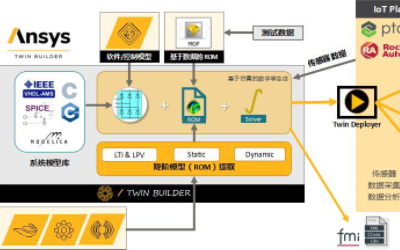Retailers misunderstand their shoppers
It appears official that Tesco Plc, the United Kingdom's largest food retailer, won't continue in China under its own brand name.
According to an agreement signed last October with China Resources Enterprise Ltd, Tesco will retain a 20 percent stake in a joint venture but, as suspected, CRE's Vanguard brand name will replace the Tesco name.
But is this the right move for Tesco and CRE, or does it represent a massive misunderstanding of the needs and wants of the Chinese food retailer market?
China's burgeoning urban middle-class shoppers are motivated very much by "prestige", "status" and "elitism". That's why China is fast becoming the largest market in the world for luxury goods.
Many Western brands have found that repositioning themselves more emotionally for the Chinese market leads to market share gain and an increase in profit.
For example, BMW, Ikea and even Pizza Hut and Starbucks are perceived as far more emotional and status-enhancing experiences in the minds of the increasingly affluent urban Chinese public, in comparison with North American and Western Europeans.
It appears that CRE and Tesco and others have overlooked this defining feature of Chinese consumer culture and aim to continue with a combination of "low cost" and "value for money" approach where food retailing is concerned.
This oversight is even more astonishing given that the Tesco brand originates from the UK, where Waitrose occupies just such a niche, that of a slightly exclusive brand of food retailer targeting the middle class.
In the UK, Waitrose shoppers are not just attracted by the higher quality and more exclusive and innovative nature of the range of goods stocked. They also perceive the Waitrose experience as status-enhancing. Shopping at Waitrose is part of being middle class.
Currently all food retailers in China, even the United States-based Wal-Mart Stores Inc and France's Carrefour SA, and including CRE's Vanguard, compete on "convenience" and "low cost" with a "value for money" range of goods.
Simply replacing the Tesco brand name with CRE's Vanguard is thus a massive missed opportunity to establish a "Chinese Waitrose" brand. Built on "exclusivity" and "status enhancement", such a brand would resonate with China's aspirational shoppers.
To achieve such an exclusive brand position in the minds of the Chinese, it is not only essential that higher-quality goods are on offer at a higher price but that all aspects of the stores and shopping experience communicate style and elegance.
The size of the stores, for example, should be slightly smaller than those of the mass market, bargain basement food retailers. This is also a quite deliberate design feature of a typical Waitrose store in the UK.
Not only slightly smaller stores but appreciably more spacious environments will also contribute to a superior, more refined image. Larger stores, which lead to greater economies of scale, lower costs and prices, aren't necessary for such an exclusive brand.
The name is also important. The Chinese are very familiar with CRE's successful Vanguard brand and are also aware of the Tesco brand name, which launched in mainland China in 2004.
However, the Tesco name does not represent "success" in the minds of the Chinese and no effort has been made to communicate any sort of superior image.
To build such an image of superiority and exclusivity, therefore, CRE's Vanguard brand name should be retained but another, secondary name should be added to differentiate from the current Vanguard offering and build an image of "luxury".
Such a dual name approach will capture attention, with the very well-known Vanguard name and, at the same time, convey a far superior brand with a new name, which has obvious associations with "status" and "exclusivity" and "luxury".
Such a pioneering move would probably allow for a second brand name that simply communicates "luxury" or "prestige" with no major competitors at present.
This double brand-naming strategy could, therefore, simply make use of "Vanguard" and "shechi" (luxury) will communicate precisely this new, exclusive form of food retailer. At present, none of the major food retailers operating in China offer anything remotely similar.
It is also crucial for this new, luxury brand of food retailer to communicate links with many of the most famous luxury brands in the world such as Burberry Group Plc, Prada SpA, Rolls-Royce Holdings Plc and Louis Vuitton Malletier.
In summary, the Chinese people's insatiable appetite for luxury brands and social climbing appears undiminished and stretches across the entire spectrum of goods and services - and food retailing should be no exception.
In much the same way that Haagen-Dazs transformed the branding of ice cream, so now do Tesco and CRE stand at the vanguard of a revolution in food retailing in China.
But is this the right move for Tesco and CRE, or does it represent a massive misunderstanding of the needs and wants of the Chinese food retailer market?
China's burgeoning urban middle-class shoppers are motivated very much by "prestige", "status" and "elitism". That's why China is fast becoming the largest market in the world for luxury goods.
Many Western brands have found that repositioning themselves more emotionally for the Chinese market leads to market share gain and an increase in profit.
For example, BMW, Ikea and even Pizza Hut and Starbucks are perceived as far more emotional and status-enhancing experiences in the minds of the increasingly affluent urban Chinese public, in comparison with North American and Western Europeans.
It appears that CRE and Tesco and others have overlooked this defining feature of Chinese consumer culture and aim to continue with a combination of "low cost" and "value for money" approach where food retailing is concerned.
This oversight is even more astonishing given that the Tesco brand originates from the UK, where Waitrose occupies just such a niche, that of a slightly exclusive brand of food retailer targeting the middle class.
In the UK, Waitrose shoppers are not just attracted by the higher quality and more exclusive and innovative nature of the range of goods stocked. They also perceive the Waitrose experience as status-enhancing. Shopping at Waitrose is part of being middle class.
Currently all food retailers in China, even the United States-based Wal-Mart Stores Inc and France's Carrefour SA, and including CRE's Vanguard, compete on "convenience" and "low cost" with a "value for money" range of goods.
Simply replacing the Tesco brand name with CRE's Vanguard is thus a massive missed opportunity to establish a "Chinese Waitrose" brand. Built on "exclusivity" and "status enhancement", such a brand would resonate with China's aspirational shoppers.
To achieve such an exclusive brand position in the minds of the Chinese, it is not only essential that higher-quality goods are on offer at a higher price but that all aspects of the stores and shopping experience communicate style and elegance.
The size of the stores, for example, should be slightly smaller than those of the mass market, bargain basement food retailers. This is also a quite deliberate design feature of a typical Waitrose store in the UK.
Not only slightly smaller stores but appreciably more spacious environments will also contribute to a superior, more refined image. Larger stores, which lead to greater economies of scale, lower costs and prices, aren't necessary for such an exclusive brand.
The name is also important. The Chinese are very familiar with CRE's successful Vanguard brand and are also aware of the Tesco brand name, which launched in mainland China in 2004.
However, the Tesco name does not represent "success" in the minds of the Chinese and no effort has been made to communicate any sort of superior image.
To build such an image of superiority and exclusivity, therefore, CRE's Vanguard brand name should be retained but another, secondary name should be added to differentiate from the current Vanguard offering and build an image of "luxury".
Such a dual name approach will capture attention, with the very well-known Vanguard name and, at the same time, convey a far superior brand with a new name, which has obvious associations with "status" and "exclusivity" and "luxury".
Such a pioneering move would probably allow for a second brand name that simply communicates "luxury" or "prestige" with no major competitors at present.
This double brand-naming strategy could, therefore, simply make use of "Vanguard" and "shechi" (luxury) will communicate precisely this new, exclusive form of food retailer. At present, none of the major food retailers operating in China offer anything remotely similar.
It is also crucial for this new, luxury brand of food retailer to communicate links with many of the most famous luxury brands in the world such as Burberry Group Plc, Prada SpA, Rolls-Royce Holdings Plc and Louis Vuitton Malletier.
In summary, the Chinese people's insatiable appetite for luxury brands and social climbing appears undiminished and stretches across the entire spectrum of goods and services - and food retailing should be no exception.
In much the same way that Haagen-Dazs transformed the branding of ice cream, so now do Tesco and CRE stand at the vanguard of a revolution in food retailing in China.








